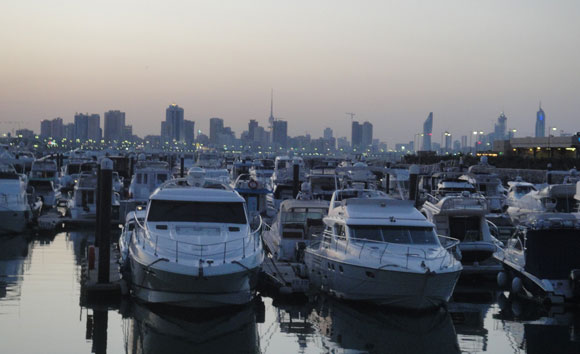
In a recently released report titled “Kuwait: Political stalemate could delay faster growth”, the Institute of International Finance (IIF) indicated that Kuwait’s overall real GDP growth should reach 4.4% in 2011, as Kuwait stepped up its oil production to make up for the shortfall from Libya. The IIF forecasts a 7.6% increase in Kuwait oil production in 2011. On the other hand, non-oil growth should stabilize at around 3%, recovering from the 2009 recession, but remaining relatively weak. This weakness is explained by the continued deleveraging in the financial sector, slow credit growth as banks struggle with high NPL ratios and other balance sheet issues, and a seemingly slower implementation of the authorities’ 2010-2014 development plan since the beginning of this fiscal year.
… the Institute of International Finance (IIF) indicated that Kuwait’s overall real GDP growth should reach 4.4% in 2011, as Kuwait stepped up its oil production to make up for the shortfall from Libya. The IIF forecasts a 7.6% increase in oil production in 2011.
Inflation moderated to 4.6% in the year to August, after peaking at 6% in December 2010. As in other countries in the region, inflationary pressures mainly come from food prices, which rose by 9.7% in August, according to the report.
The IIF also indicated that in FY 2010/11, Kuwait recorded its 12th consecutive annual fiscal surplus, which amounted to 23% of Kuwait GDP, despite a massive 44% rise in expenditures. The widening of the surplus is mainly due to the sharp increase in oil revenues, which has more than offset the large increase in government spending. The increase in government spending reflected both the start of the development plan (with capital spending increasing by 56%) and the unbudgeted KD 1.2 billion Amiri grant (encompassing the various subsidies granted to Kuwaiti citizens in January/February 2011). Meanwhile, oil revenues, accounting for around 80% of total revenues, were up by 22%.
The IIF also indicated that in FY 2010/11, Kuwait recorded its 12th consecutive annual fiscal surplus, which amounted to 23% of GDP, despite a massive 44% rise in expenditures. The widening of the surplus is mainly due to the sharp increase in oil revenues, which has more than offset the large increase in government spending. The increase in government spending reflected both the start of the development plan (with capital spending increasing by 56%) and the unbudgeted KD 1.2 billion Amiri grant (encompassing the various subsidies granted to Kuwaiti citizens in January/February 2011). Meanwhile, oil revenues, accounting for around 80% of total revenues, were up by 22%.
The article above has been published as a part of Bank Audi`s MENA Weekly Monitor of Week 47 (2011). It can be accessed via Internet at the following web address: http://www.banqueaudi.com